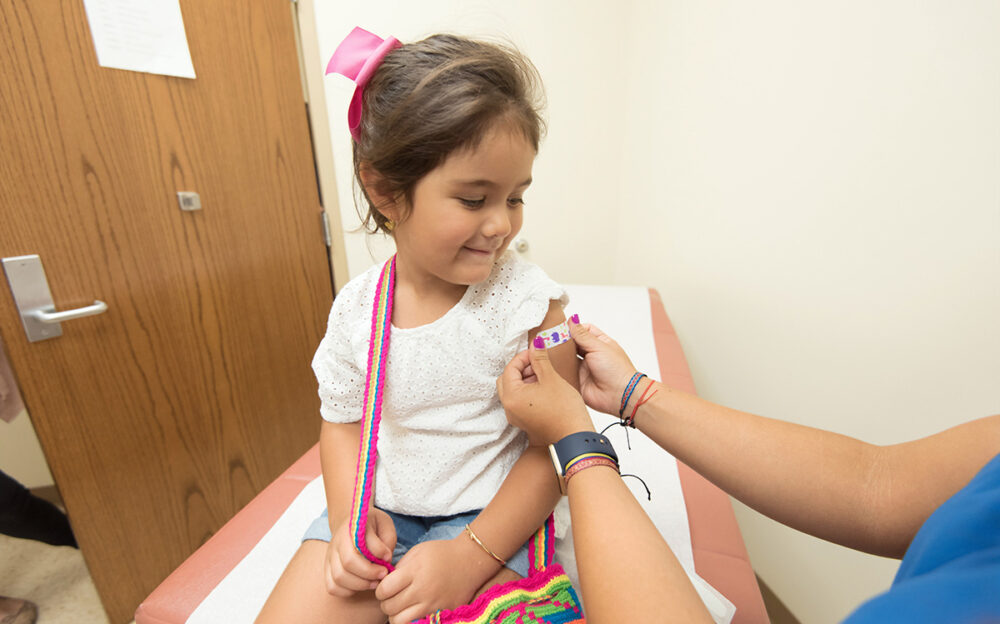
This article is republished from The Conversation under a Creative Commons licence. Read the original article.
By Dr. Department of Psychology
Think of the last time you were really afraid — and I mean terrified: Cold sweats, trembling, pounding heart. Now think about what it would be like to have that reaction if you saw a needle or even heard people talking about COVID-19 vaccines.

For about 1 in 10 people, this is their reality, and it matters for COVID-19 vaccine campaigns. First, when we are highly anxious about something, we tend to avoid or delay it. Second, experiencing high fear and a stress response can lead to escape behaviour (like leaving or acting aggressively), enduring the procedure under immense distress and experiencing symptoms of immunization stress-related responses, such as feeling dizzy or fainting. Third, needle fears can, in turn, be increased by experiencing or hearing about an immunization stress-related responses from others.
The critical thing to know is that these immunization stress-related responses do not result from something being wrong with the vaccine itself. Instead, they can occur before, during and after injections due to a stress response. Nonetheless, they can disrupt vaccination campaigns.
The good news: there are science-backed strategies to help.
Needle fear and vaccine hesitancy
Vaccine hesitancy is complex because people delay or refuse vaccination for many reasons. A COVID-19 poll showed that of Canadians who did not plan on being vaccinated or were not sure, six to seven per cent had delayed previous vaccinations because of needle fear.
As a clinical psychologist, I have researched and worked with individuals with different levels of needle fear from mild to extreme. Some degree of fear of needles is common and occurs in most children, up to half of adolescents, and 20 to 30 per cent of people aged 20 to 40. Much of my work focuses on children for three reasons:
- They experience frequent needles due to recommended vaccination schedules;
- They are vulnerable to negative experiences from undermanaged pain; and
- These negative experiences can have lasting effects. In fact, most adults with high levels of needle fear report a negative previous experience.
Needles are to some degree painful, and pain is subjective. There have been huge campaigns to get evidence-based pain management strategies to the public. In 2015, we conducted a series of rigorous reviews to make recommendations on the best ways to make vaccinations comfortable.
Science-backed strategies
The Comfort, Ask, Relax, Distract (CARD) system can help clinics, individuals and parents make the vaccination experience as comfortable as possible. If you are mildly to moderately fearful of needles and concerned about pain associated with COVID-19 vaccinations, you will want to make a coping plan for before, during and after the injections.
- What will you wear for easy access to your upper arms?
- What will you do while waiting at the clinic (read, listen to music, play a video game)?
- Do you need to purchase a topical anesthetic to numb your skin at the injection site?
- How do you want the clinician to indicate they are starting, such as “One, two, three, here we go”?
- During the injection, decide if you want to look at it or away and tell the clinician what you need.
- During the procedure, do you want to talk about something else, play on your phone or listen to guided imagery?
- Afterwards, how will you reward yourself and remember what helped? You could take a short video describing what went well to help you next time.
Individuals who are extremely fearful of needles will need more than the strategies described above, intended to manage pain and lower levels of fear closer to the time of the needles. Essentially, these individuals need to gain confidence that what they are most afraid of won’t happen, or if it does, they can survive it. This is the essence of exposure-based treatment for fears that are out of proportion to the danger posed.
Exposure-based therapy is considered the gold standard approach for “specific phobias,” which is what extreme needle fear falls under within the Diagnostic and Statistical Manual of Mental Disorders. The technical term is “specific phobia, blood injection injury subtype,” estimated to occur in about 3.5 per cent of people.
I have argued elsewhere that we need to care about the approximately 10 per cent who have high fear, whether or not they have a mental health diagnosis related to needles. This is because up to 94 per cent) of affected people won’t go to a professional to get that diagnosis, but are still suffering and in need of help.
Exposure therapy can occur in person or through imagining the feared situation. Here’s an overview:
First, an individual is asked to create a list of all of the situations and aspects related to getting a needle that make them afraid: Is it about seeing blood? Feeling the needle enter the body? The pain? Feeling dizzy? Or something else?
Then the individual rates their fear for each of these situations and creates a fear hierarchy which starts with the least feared situation (for example, looking at pictures of needles) and moves in small increments to the most feared (for example, vaccine injection). The person practises each step until their fear comes down before moving to the next one.
Some individuals feel dizzy or faint during needles. This is more common in individuals with high levels of fear. A strategy called muscle tension — a technique of tensing and releasing muscles — can help avoid the sudden drop in blood pressure that leads to dizziness and fainting. Someone with high needle fear can practise doing muscle tension when completing their fear hierarchy steps.
Maximizing comfort and confidence
You can imagine how much motivation and bravery is required for an individual to willingly face their fears and this affects how acceptable the treatment is. With my colleagues, I am working on creating more accessible exposure-based interventions for high levels of needle fear. Other treatments that may be promising, such as eye movement desensitization and reprocessing, also warrant investigation by researchers.
Unmanaged needle fear is very distressing for those affected and can influence health-care choices. But it’s not their choice to be afraid. The COVID-19 pandemic has brought needle fear into the spotlight like nothing before. Yet, even outside COVID-19, needles are a common part of health care for prevention, diagnosis and treatment.
Ignoring needle fear doesn’t make it go away — in fact, for the person with the fear, avoidance just makes it worse. By consistently managing needle-related pain and fear, we have an opportunity to not only increase COVID-19 vaccinations, but also maximize comfort and confidence in health-care interactions and needle procedures more broadly.